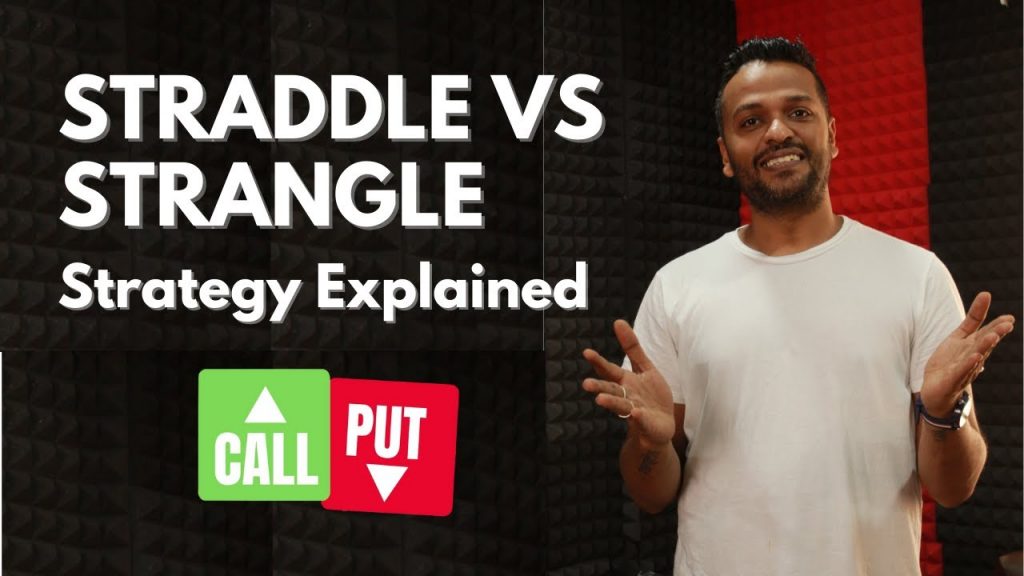Introduction
Options trading is a fascinating financial instrument that offers investors the opportunity to profit from market movements without actually owning the underlying asset. Traders can utilize various strategies to capitalize on price fluctuations, and two popular ones are the Straddle and Strangle option strategies. In this article, we will delve into the concepts of these strategies, their workings, advantages, disadvantages, and when to use them effectively.
Understanding Options Trading
Before we dive into the Straddle and Strangle strategies, let’s gain a basic understanding of options trading. Options are derivative contracts that provide the holder the right, but not the obligation, to buy (call option) or sell (put option) an underlying asset at a predetermined price (strike price) on or before a specific date (expiration date).
Option trading allows investors to speculate on various market scenarios, including bullish, bearish, or neutral trends, providing flexibility and risk management opportunities.
Option Strategies Overview
Option strategies are carefully constructed plans that involve the combination of multiple options contracts to achieve specific investment objectives. These strategies can be categorized into two main types: single-leg strategies and multi-leg strategies.
Single-leg strategies involve using a single options contract to make a straightforward bet on market direction. On the other hand, multi-leg strategies like Straddle and Strangle involve using two or more options contracts to create more complex positions.
Straddle Option Strategy
The Straddle option strategy falls under the multi-leg category and involves purchasing both a call option and a put option with the same strike price and expiration date. This strategy is effective when the investor expects significant price movement in the underlying asset but is uncertain about the direction.
How Straddle Works
When an investor initiates a Straddle, they believe that the underlying asset’s price will experience substantial volatility. If the price moves significantly in either direction, the investor will profit from the corresponding option (call or put), while the loss from one option is offset by the gain in the other.
Advantages of Straddle
The Straddle strategy offers several advantages to traders. Firstly, it allows investors to benefit from market volatility without committing to a specific direction. Secondly, it provides a limited risk-reward profile, as the maximum loss is limited to the initial investment in purchasing the options. Thirdly, Straddles can be used during important market events or earnings releases, where price movements are unpredictable.
Disadvantages of Straddle
Despite its benefits, the Straddle strategy also has its downsides. The main disadvantage is that it requires a significant price movement to be profitable due to the cost of purchasing both call and put options. Moreover, time decay can erode the value of the options, resulting in losses if the underlying asset remains stable.
Strangle Option Strategy
The Strangle option strategy is similar to the Straddle but involves purchasing out-of-the-money call and put options with different strike prices. This strategy is suitable when the investor anticipates significant price movement but is unsure about the direction, just like the Straddle.
How Strangle Works
When employing a Strangle strategy, the investor profits if the underlying asset’s price moves sharply in either direction, regardless of whether it is upward or downward. The potential gain comes from the price movement’s magnitude, while the risk is limited to the initial investment in buying the options.
Advantages of Strangle
The Strangle strategy offers several benefits. Firstly, it requires a lower initial investment compared to the Straddle since out-of-the-money options are less expensive. Secondly, Strangles can be used in volatile markets where significant price swings are expected. Finally, it provides a more extensive profit range as it covers a broader price territory.
Disadvantages of Strangle
However, Strangles also have their drawbacks. The primary disadvantage is that the price movement must be substantial to cover the cost of purchasing both options and yield a profit. Additionally, similar to Straddles, time decay can erode the options’ value, leading to losses if the underlying asset remains relatively stable.
Straddle vs. Strangle Comparison
Both Straddle and Strangle strategies aim to profit from significant price movements with limited risk. However, they differ in their cost, risk-reward profiles, and profit range. The choice between the two depends on the investor’s market outlook and risk tolerance.
When to Use Straddle or Strangle
The decision of whether to use the Straddle or Strangle strategy depends on several factors, including market conditions, the investor’s outlook, and the expected magnitude of price movement. Traders should carefully assess these elements before implementing either strategy.
Conclusion
In conclusion, options trading offers a plethora of strategies, with the Straddle and Strangle being two popular choices for capitalizing on market volatility. Each strategy has its unique features and can be suitable depending on the market situation and the trader’s risk appetite. It is crucial for investors to conduct thorough research and analysis before employing any options trading strategy to make informed decisions.
FAQs
- What is the main difference between Straddle and Strangle strategies? Both strategies involve using multiple options contracts but differ in the strike prices of the options purchased. A Straddle uses options with the same strike price, while a Strangle uses options with different strike prices.
- Which strategy is better for highly volatile markets? Both Straddle and Strangle can be suitable for highly volatile markets, as they aim to profit from significant price movements. However, the Strangle may be more cost-effective due to the use of out-of-the-money options.
- What happens if the underlying asset’s price remains stable? If the underlying asset’s price remains stable, both the Straddle and Strangle strategies can result in losses due to time decay eroding the value of the options.
- Can these strategies be used with any underlying asset? Yes, Straddle and Strangle strategies can be used with various underlying assets, including stocks, commodities, and currencies.
- Are there any other multi-leg option strategies worth exploring? Yes, there are several other multi-leg option strategies, such as Butterfly, Condor, and Iron Condor, which traders may find useful in different market scenarios.
